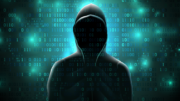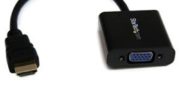Free public Wi-Fi is an incentive many businesses use to attract customers. You can find it in restaurants, hotels, coffee shops, airports, and malls among other places. The businesses offer them freely with good intentions-to allow the customers to do one or two things on the internet as they wait to be served. Talk of adding value to the customer. Moreover, we love them because it saves us a few coins on internet costs. They can be a savior when you want to catch up on some work, emails, or just scroll through social media on the go.
However, while they may be enticing and seem harmless, connecting to a free public can pose a risk to your data privacy. That is why you should always connect using a VPN. NordVPN, for instance, is a reliable and trusted VPN that guarantees your security on the internet no matter the network that you use. It also allows a fast connection, and the ability to secure up to six devices. So, if you want to use your phone, tablet, and laptop securely all at the same time, you are covered. (You can turn to this NordVPN Review if you’d like to know more).
Besides using a VPN, always disable file sharing, Wi-Fi, and Bluetooth on your devices when using free public Wi-Fi. In addition, avoid accessing websites that hold sensitive information such as bank accounts, social security numbers, and credit cards. Instead of logging in through apps, opt for the websites to ensure that they use HTTPS.
So, why go through all the trouble rather than connect and surf away? One of the reasons why public Wi-Fi entices most people is that it is free and requires no authentication to connect. These are the same reasons that hackers get attracted to it too. They know that most people using such networks are carefree, proving a perfect opportunity to attack unsecured devices connected to the network.
Here are some of the vulnerabilities that a free public Wi-Fi poses.
Man-in-the-Middle attacks
Ideally, data moves from your computer to the connection point when you connect to the internet. In cases of Man-in-the-Middle attacks, hackers use the vulnerabilities available to position themselves in between your computer and the connection point. This means that whatever you are doing on the internet doesn’t get to the connection point, but rather goes to the hackers.
With this attack, everything you access on the internet is laid bare to the hackers. If you access your bank account, credit cards, emails, and passwords, everything goes to them. You can only imagine what damage they can do with your identity, security credentials, and sensitive data.
Fake hotspots
Hackers know that people using free public Wi-Fi rarely take time to confirm the authenticity of a network before connecting to one. They will get in a hotel, turn Wi-Fi on, connect to the one that looks genuine, and start browsing the internet. What hackers do is create a fake hotspot almost similar to the genuine one. For instance, if you are at a coffee shop named GoodMorning, they create a hotspot with the name Good morning. You would need to be very keen to notice the difference. If you connect to such a network, hackers get a chance to view what you are doing.
Malware attacks
This is where hackers create malicious software and then inject it into peoples’ computers in a bid to steal sensitive information or destroy a computer to extort money from the owners. If you allow file sharing on your device, hackers can inject the malware if you are connected to an insecure connection.
Sometimes they hack the connection point itself. Once you connect to the hacked network, a pop-up window that looks genuine appears. A click to the pop-up window installs the malware to your computer.
Snooping and sniffing
Just as the name suggests, hackers use malicious software to listen and see what you are doing on the internet. This often happens when you are connecting to the internet through a network that doesn’t require authentication. It’s also worth mentioning that you should never open unsolicited files, and if you need to share an important file using free, public WI-FI, make sure they are password-secured and encrypted zip files.
Unencrypted network
Technically, Wi-Fi routers come with encryption turned off. It is up to the IT specialist setting up the router to enable the function. If this doesn’t happen, all data sent through the network travels in a readable form. This is risky if malicious people are watching. Since you can’t tell for sure whether the connection is encrypted, it is better to steer clear of free Wi-Fi.
Conclusion
Reading the above, it is clear that free public Wi-Fi networks aren’t all that rosy. However, it is common to find yourself in a position where using free public Wi-Fi is your only option. In that case, be sure to take precautions before connecting to the network.





